== Introduction ==
Any device taking classical or quantum systems of a certain type as input and (possibly different) classical or quantum systems as output is a '''channel'''. This definition covers any processing step in information theory, from preparations to free and controlled time evolution to measurements. Channels are thus among the central concepts of classical and quantum information science.
[[Classical channels]] are those that can transmit or store only classical information, like electrical wires or the Royal Mail. [[Quantum channels]] can transmit both classical and quantum information. Physical realizations of quantum channels include everything from optical fibers or coupled spin chains for quantum communication, to shielded atoms in optical traps for quantum storage. Classical (resp. quantum) [[capacity]] measures the amount of classical (quantum) information that can be sent undistorted through the channel.
== Definition and Properties ==
Mathematically, a channel is represented by a map mapping [[states]] (''i.e.'' density operators) on some [[Hilbert space]] to states on some (possibly different) Hilbert space . Classical channels are included in this setup if we interpret classical functions as diagonal matrices, .
Which such maps qualify as channels? The channel should respect convex mixtures, and hence be '''linear'''. It should preserve the normalization of states, and thus be '''trace-preserving (TP)''': . We also require that map positive operators to positive operators, so that is a valid density operator for any input density operator . Finally, these properties should remain true if the operation is only applied to part of a larger system. So we require that be positive for all , where denotes the identity operation on the matrices. A map with this property is usually called '''completely positive'''.
Obviously, complete positivity of implies positivity. The converse holds if the input or output system is classical. However, in the quantum case there are maps which are positive, but not completely positive. The matrix transpose operation is a prominent example of such an unphysical operation.
:''In summary, a channel is a completely positive and trace-preserving (CPTP) map between state spaces associated with physical systems.''
The above approach to quantum channels is ''axiomatic'', i.e. based on a set of postulates, which are required by the statistical interpretation of quantum mechanics. An alternative way to characterize the possible channels is ''constructive'': we allow just those channels which can be built from the basic operations of (1) tensoring with a second system in a specified state, (2) unitary transformation, and (3) reduction to a subsystem.
Luckily, the two approaches agree: the above three types of maps are CPTP, and by '''Stinespring's dilation theorem''' (known in the community under the jargon [[The Church of the larger Hilbert space|Church of the larger Hilbert space]]), every completely positive map can be decomposed into a product of the above three operations.
== Heisenberg vs. Schrödinger ==
We have so far described channels as operations on states: when the system is initially in the state and send through the channel , the expectation value of the measurement of the observable at the output side of the channel is . Since the dynamics is carried by the states (while the observables are static), this approach is usually called the '''Schrödinger representation''' of the channel. Alternatively, we may describe the dynamics in the '''Heisenberg representation''' as a transformation on observables. The corresponding channel is defined in terms the '''duality relation'''
:
for all states and observables . The duality relation guarantees that all expectation values coincide, so both descriptions are completely equivalent. The Schrödinger dual is linear, completely positive and trace-preserving iff is linear, completely positive and unit-preserving (or ''unital''), i.e., .
== Special cases ==
[[States]] are channels with one-dimensional input space . '''Measurements''' are channels with classical range algebra , while '''preparations''' are channels with classical domain (cf. [[Measurements and preparations]]).
== References and further reading ==
* M. A. Nielsen, I. L. Chuang: ''Quantum Computation and Quantum Information''; Cambridge University Press, Cambridge 2000; Ch. 8
* E. B. Davies: ''Quantum Theory of Open Systems''; Academic Press, London 1976
* V. Paulsen: ''Completely Bounded Maps and Operator Algebras''; Cambridge University Press, Cambridge 2002
* M. Keyl: ''Fundamentals of Quantum Information Theory''; Phys. Rep. '''369''' (2002) 431-548; [http://arxiv.org/abs/quant-ph/0202122 quant-ph/0202122]
== See also ==
* [[Classical channel capacity]]
* [[Quantum channel capacity]]
* [[Measurements and preparations]]
* [[The Church of the larger Hilbert space]]
[[Category:Handbook of Quantum Information]]
